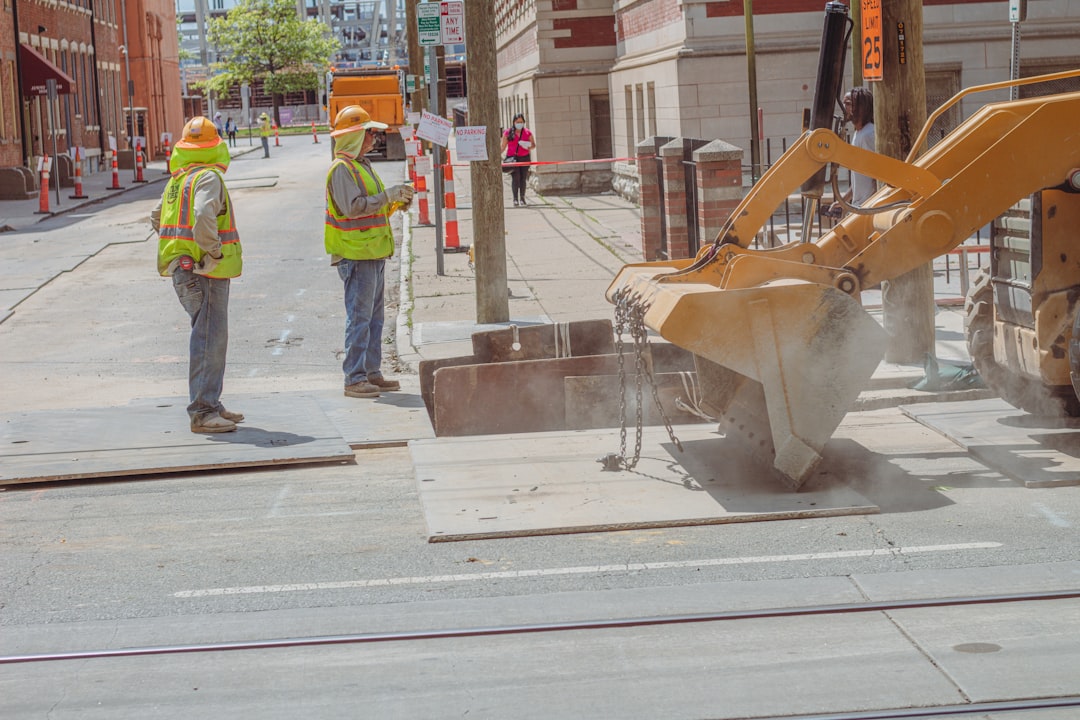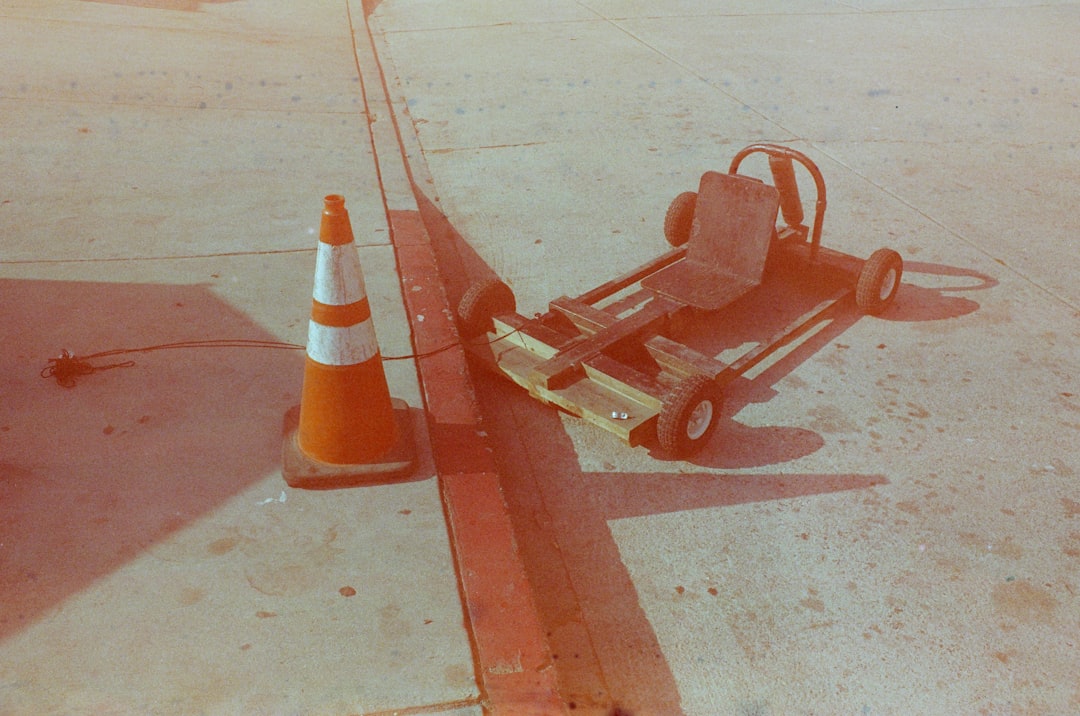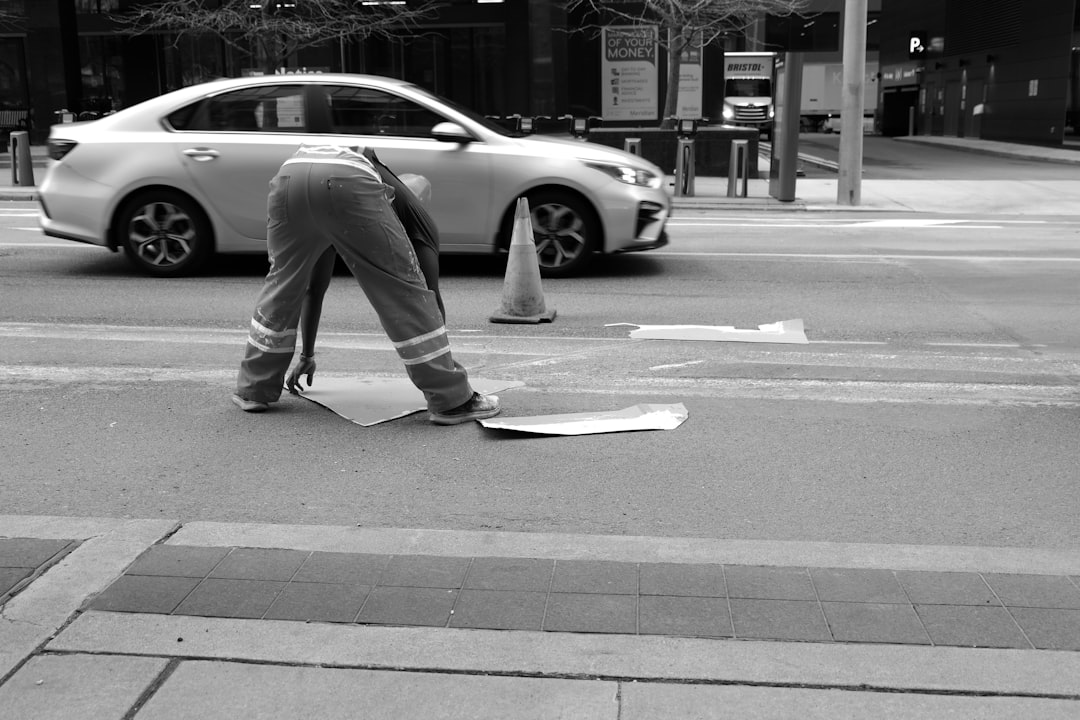

Engage prospects with a scan and streamline customer engagement with FREE QR code marketing tools by Sona – no strings attached!
Create a Free QR CodeFree consultation

No commitment

Engage prospects with a scan and streamline customer engagement with FREE QR code marketing tools by Sona – no strings attached!
Create a Free QR CodeFree consultation

No commitment
QR codes have rapidly evolved into strategic tools that seamlessly connect print marketing efforts to measurable digital actions. For paving contractors, this innovation solves a common problem: prospective clients frequently encounter your business through yard signs, vehicle wraps, or mailers but lack an easy way to engage immediately. QR codes offer a direct, frictionless bridge, allowing prospects to access information, request quotes, or schedule site visits exactly when their interest is highest.
Whether working with asphalt, concrete, residential, or commercial projects, QR-enabled materials transform passive outreach into active engagement opportunities. Instead of losing high-intent prospects to memory lapses, QR codes on print assets transform each touchpoint into an interactive gateway that supports real-time interaction and lead capture, strengthening both brand visibility and conversion rates.
The adoption of QR codes empowers paving contractors to capture interest instantly, streamline customer interactions, reduce dependence on manual processes, and monitor real-time campaign performance. In a field where rapid responses often win the job, leveraging QR technology helps contractors ensure that every interested prospect is identified, tracked, and swiftly converted into a client, setting your brand apart as responsive and data-driven.

Traditional marketing often fails to capture the full spectrum of qualified leads for paving businesses because print assets rarely translate directly into digital interactions, especially when buyers research vendors without ever filling out a form or sharing contact details. This disconnect results in lost business and unclear ROI since there is no way to follow up on moments of interest that happen near a job site, at a mailbox, or while a vehicle drives by. Paper brochures, manual estimate forms, and phone-based scheduling all introduce friction that slows response time and reduces conversion.
QR codes eliminate this gap by giving prospects a single action that triggers a focused digital experience. Printed signs, decals, and handouts become gateways to pre-filled quote forms, appointment calendars, and up-to-date service pages. Unlike static phone numbers or long URLs, a QR scan captures intent at the moment it occurs, then routes the visitor to the appropriate next step without delay. With Sona QR, you can also change destinations after printing, track performance by placement, and send scan data into your CRM for faster follow-up.
With QR codes, paving contractors can break this barrier by:
By adopting QR solutions purpose-built for field workflows, paving contractors move beyond static outbound tactics and into an attribution-powered system. Every yard sign, wrap, or mailer becomes measurable. Every scan becomes a prompt for automated engagement. Every campaign contributes data that improves the next deployment.

Paving contractors contend with intense local competition and a historically manual approach to marketing, where valuable leads are often missed because interactions are not captured unless someone fills out a form or calls directly. Many prospects investigate quietly, then move on to whichever contractor made engagement the easiest. Without a connective strategy, a strong job site presence or attractive mailer may build brand awareness but fail to produce measurable pipeline.
QR codes address these challenges by making the path from curiosity to contact simple and trackable. A code placed where interest naturally forms, such as a freshly paved driveway or a commercial lot resurfacing, puts a one-scan action in the prospect’s hand. Scans can open an estimate scheduler, launch a click-to-call interface, or display a nearby project gallery. Dynamic QR codes, like those from Sona QR, allow you to update messaging as seasons change or promotions rotate, ensuring printed assets remain current.
QR codes help contractors:
By empowering contractors to convert offline curiosity into digital action and capturing the data that traditional methods miss, QR codes become essential for profitable and scalable growth.

A perennial challenge for paving contractors is matching the right digital destination to each real-world interaction. A homeowner standing in their driveway needs an instant quote form. A property manager watching your crew resurface a lot may want portfolio galleries and commercial references. Outdated materials get in the way, since printed details become inaccurate as services, pricing, and promotions evolve.
Modern QR solutions solve this with flexible formats and destinations you can adjust as needs change. With a platform like Sona QR, you can create, edit, and measure codes across campaigns without reprinting.
Static codes work for evergreen destinations like a company overview page. Dynamic codes are better for campaigns where you need performance tracking, retargeting, or frequent updates. For most marketing and lead generation uses, dynamic QR codes in Sona QR provide flexibility and data that static codes cannot.

Competing for attention in local markets requires turning every public-facing surface into a conversion path. Many contractors overlook places where prospects quietly evaluate, such as site boards or equipment parked on a street. Others fail to attribute performance by asset, leaving them to guess which placements actually produce leads. QR codes close these gaps by adding scannable actions to high-visibility materials and by tagging each asset for measurement.
Think beyond the basics and orient placements to the natural behavior of your audience. A neighbor walking a dog sees your yard sign up close. A facilities manager may notice your decal as a crew works near their property. A homeowner inspecting the completed driveway will look at the job folder or warranty paperwork.
Make QR codes work hardest by:
These placements convert quiet curiosity into qualified demand, reduce missed opportunities, and help you invest in the channels that consistently fill your pipeline.
In paving, speed of response and clarity of proof often determine who wins the bid. QR codes help contractors meet prospects in the moment, move them to action, and keep interactions measurable from the first scan to contract signature.
Deploy QR codes for the following high-impact use cases:
By turning each encounter into a trackable next step, contractors can attribute performance to the specific placements and messages that created momentum, then refine those elements for continuous improvement.
For many paving contractors, the biggest attribution blind spot is how to identify and prioritize the most engaged prospects before they complete a form. Campaign-specific QR codes solve this by tagging touchpoints and automatically enriching your CRM with behavioral context that drives smarter follow-up.
Each scan is a signal. It reveals location, device, time, and the content that motivated action. When you deploy multiple QR codes across materials and stages, you can segment audiences by intent and timing, then tailor nurturing, ads, and outreach accordingly.
For paving, segment distinctions often include residential driveway owners, property managers, HOA boards, general contractors, municipal contacts, and repeat customers. Distinguishing among these profiles at scan time allows you to adapt your messaging quickly, such as emphasizing longevity and ADA compliance for commercial buyers versus curb appeal and timeline for homeowners.
Disconnected campaigns create confusion and delay. A consistent QR strategy ties your offline presence to digital workflows so that every interaction feeds a centralized data set and every prospect sees a coherent message across channels. The result is a smoother journey from first glance to scheduled estimate and a clear picture of what works.
Focus on the channels where paving contractors already invest, then retrofit them with QR-driven pathways. Aim for quick actions: schedule an estimate, view a gallery, leave a review, or request a maintenance plan. With Sona QR, you can manage all codes, destinations, and analytics in one place, then sync scan data to your CRM and ad platforms for unified reporting.
QR codes serve as the offline on-ramp to your digital marketing system. They also unlock a new layer of data collection across channels that were previously hard to measure. With a centralized platform like Sona QR, you can manage all your codes, monitor performance, and sync scan data with your CRM and ad platforms to create a single source of truth.
Start by defining a single, clear objective for your first campaign, such as boosting quote requests in a target neighborhood, increasing Google reviews after job completion, or driving commercial maintenance inquiries. Narrow goals produce tighter messaging and better conversion rates because scanners immediately understand what they will get.
Map the use case to a specific physical asset that prospects already see. For residential work, use job site signs or door hangers. For commercial buyers, use equipment decals on large projects or brochures handed out during walkthroughs. Each asset should point to a digital destination that fulfills the promise in your CTA.
Choose static codes for fixed, evergreen destinations, such as a company overview or a warranty registration page. Static codes are simple but provide limited flexibility and no campaign-level analytics. For growth-focused campaigns, dynamic codes are usually the better choice.
Dynamic QR codes allow for tracking, A/B testing, and destination updates without reprinting. With Sona QR, you can change where a code points based on performance, seasonality, or audience. You can also attach UTM parameters to each placement, making it easy to attribute results in analytics and CRM tools. Start creating QR codes for free.
Design for scannability and clarity. Use high contrast, adequate quiet space around the code, and a size that fits the viewing distance. Include your logo within the code or next to it and a short, benefit-driven call to action, such as Scan for a same-day estimate or Scan to see nearby projects. Place codes where glare is minimal and where a person can stand safely to scan.
Test early and often. Print a sample at actual size, then scan with different devices and in different lighting conditions. Test on vehicles while parked and on signage from the sidewalk. If your crews will place signs, train them to check visibility and adjust the angle. With Sona QR, you can generate preview links and test scans before final deployment.
Roll out your codes where intent is strongest. Tie each placement to a logical next step. Yard signs can open a quote form, completion packets can open a review page, and equipment decals can open a portfolio gallery or a commercial services overview. Use unique codes per channel and region to isolate performance.
Coordinate creative across assets so that the CTA, value proposition, and destination match. For example, if your door hanger says Scan for a 2-minute quote, the landing page should open to a two-field form and a scheduler, not a generic homepage. Keep the promise of the scan.
Monitor scan volume, conversion rates, and time from scan to scheduled estimate. Compare performance by placement, neighborhood, and service line. Use insights to refine CTA language, code size, landing page content, and form length. With Sona QR, set alerts for spikes in scans so your team can respond quickly.
Iterate on both the code design and the post-scan journey. If scans are high but form completions are low, simplify the form or add a click-to-call option. If scans are low, revisit placement, size, and CTA. Share performance dashboards with your crews so they see the impact of good placement and can help optimize in the field.
A common marketing pain point for paving contractors is the difficulty of tying offline engagement to actual signed projects, especially when interactions begin on job sites or through print. Without attribution, it is hard to defend budgets or double down on what is working. Robust QR analytics bring clarity by connecting the moment of scan to the actions that follow.
With Sona QR and Sona.com, you can capture real-world engagement and trace it through your funnel. Scans become events tied to specific assets and locations. Landing page behavior, form submissions, and scheduled appointments connect to CRM records. Over time, you can pinpoint which placements generate the fastest-moving and highest-value leads.
When you make QR codes part of your performance marketing strategy, every placement becomes a measurable experiment and every scan becomes a data point that informs resource allocation.
The contractors who consistently win with QR codes treat them as part of a disciplined system, not a one-off tactic. Small improvements in placement, design, and follow-up create compounding gains in scan rates and conversion.
Focus on the best practices that fit your media and workflow, then automate as much as possible so your team stays focused on estimates and production. The following tactics have the strongest impact in paving environments.
You can generate and track your first QR codes for free with Sona QR. A centralized toolset simplifies testing, measurement, and automation, so you can scale what works across crews, neighborhoods, and service lines.

Seeing the strategy in action helps teams move from theory to practice. The following scenarios illustrate how contractors used QR codes to close gaps, improve speed, and increase measurable results. While your outcomes will vary based on market and execution, these examples point to repeatable plays.
These examples demonstrate how QR codes reveal previously invisible demand and compress the time from interest to action. They also highlight the compounding value of attribution, since lessons from one campaign can be applied across placements in future deployments.
In the field, details determine whether your codes are scanned or ignored. Attention to visibility, clarity, and experience design will significantly improve outcomes. Avoid common mistakes such as using low-contrast codes, placing them too high or too low, or linking to slow-loading pages that frustrate mobile users.
Build QR usage into your team culture. Teach estimators and crew leads to think like field marketers who watch for glare, distance, and eye lines. Encourage them to snap quick photos of placements that work well so the standard can be replicated across jobs.
QR codes have become fundamental for paving contractors aiming to connect every print asset, project site, and in-person interaction to an actionable digital journey. By enabling instant, trackable access to information and converting previously anonymous offline interest into measurable, timely leads, contractors can accelerate growth, reduce acquisition costs, and enhance client trust in an increasingly competitive landscape.
When implemented thoughtfully, each scan becomes more than a digital interaction. It represents a well-timed connection, better data for decision-making, and a brand that responds quickly with clarity. With robust, properly integrated QR workflows powered by platforms like Sona QR and Sona.com, paving companies can finally resolve long-standing visibility and responsiveness challenges, ensuring every prospect’s interest is nurtured and every opportunity is fully realized.
QR codes have revolutionized the paving contractors industry by transforming traditional job sites and customer interactions into dynamic, measurable opportunities for growth. Whether it’s streamlining access to project details, enhancing client communication, or improving job tracking efficiency, QR codes replace cumbersome paperwork and manual updates with instant, mobile-friendly solutions that capture real-time data and drive better project outcomes.
Imagine effortlessly sharing updated project specs or maintenance schedules with clients and crews, all while gaining insights into engagement and response rates. With Sona QR, you can create dynamic, trackable QR codes in seconds, update campaign content instantly without reprinting, and link every scan to actionable business results. No more missed updates or lost information—just smarter, more efficient paving projects that keep clients satisfied and operations running smoothly.
Start for free with Sona QR today and transform every scan into a step toward stronger client relationships and more successful paving contracts.
The best marketing strategies for paving contractors include using QR codes on yard signs, vehicle decals, mailers, brochures, and job site signage to convert offline interest into measurable digital engagement, combined with multi-channel campaigns that integrate print and online assets for seamless lead capture and follow-up.
QR codes can be placed on print materials like yard signs, vehicle wraps, mailers, and completion packets to provide prospects instant access to quote forms, appointment scheduling, service portfolios, and review pages, enabling real-time engagement and data capture.
Using QR codes in print marketing allows paving contractors to bridge offline-to-online engagement, track anonymous interest, update destination content without reprinting, gain actionable analytics by placement and campaign, and improve response speed and lead conversion rates.
A reliable paving contractor can be identified by their use of transparent and measurable marketing tools such as QR codes that provide instant access to portfolios, verified reviews, and easy quote requests, demonstrating responsiveness, professionalism, and data-driven client engagement.
The latest trends include integrating dynamic QR codes into print and field assets for real-time lead capture, using analytics-driven platforms like Sona QR to track campaign performance, automate follow-ups, segment audiences by intent, and unify offline and online marketing efforts.
Use Sona QR's trackable codes to improve customer acquisition and engagement today.
Create Your FREE Trackable QR Code in SecondsJoin results-focused teams combining Sona Platform automation with advanced Google Ads strategies to scale lead generation

Connect your existing CRM

Free Account Enrichment

No setup fees
No commitment required

Free consultation

Get a custom Google Ads roadmap for your business






Launch campaigns that generate qualified leads in 30 days or less.
